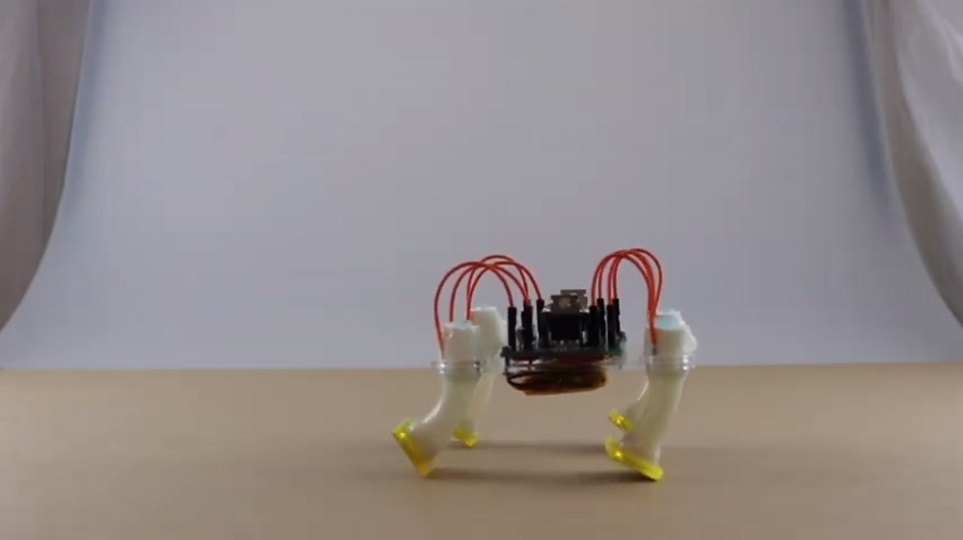Engineers at the University of California San Diego have developed soft actuators whose movement can be controlled electrically. This could usher in a new generation of robots that are compact, portable, and multifunctional.
Most current actuators function by pumping either air or fluids through the chambers inside. As a result, they usually have come with a very bulky setup.
When building such actuators, engineers have to tether large power sources, pumps, and other specialized equipment for it to function correctly.
Well, a team led by UC San Diego mechanical and aerospace engineering professor Shengqiang Cai is about to change all that.
In their published paper in the journal Science Advances, the researchers described how they created soft actuators for compact soft robots. And as proof of concept, the engineers built a soft, battery-powered robot using these new actuators.
Alongside walking on a flat surface, the robot can also move objects. In addition, the engineers built a soft gripper that can grasp and pick small objects.
Developing an Electrically Controlled Soft Actuators
The UC San Diego team made the actuators from liquid crystal elastomers (LCEs) – a type of material used for artificial muscles in robots.
The material consists of liquid crystal molecules embedded in a stretchy polymer network. Similar to our muscle’s response to signals from nerve cells, LCEs also change shape, contract, and move in response to stimuli such as heat or electricity.
While constructing each actuator, the engineers sandwiched three heating wires between two thin films of LCEs. They stretched and exposed the material to UV light before rolling it into a tube.
That way, it was possible to control each heating wire independently to make the tube bend in six different directions.
When the engineers passed an electric current through one or two wires, it heats part of the tube. In response, the tube bends in the direction of those wires.
Similarly, passing an electric current through all three wires caused the entire tube to contract and shorten in length. However, on switching on the electricity, the tube cools off and returns to its original shape.
The first author of the study and mechanical and aerospace engineering Ph.D. student at the UC San Diego Jacobs School of Engineering, Qiguang He said:
“Using an externally applied electrical potential makes it easy to program the position of each tubular actuator.”
At the moment, the actuators take 30 seconds to bend and contract and four minutes to return to their original shapes. However, the team is working on increasing this speed.
According to He, their ultimate goal is to build actuators that contract and relax as quickly as human muscles.


















Comments (0)
Least Recent